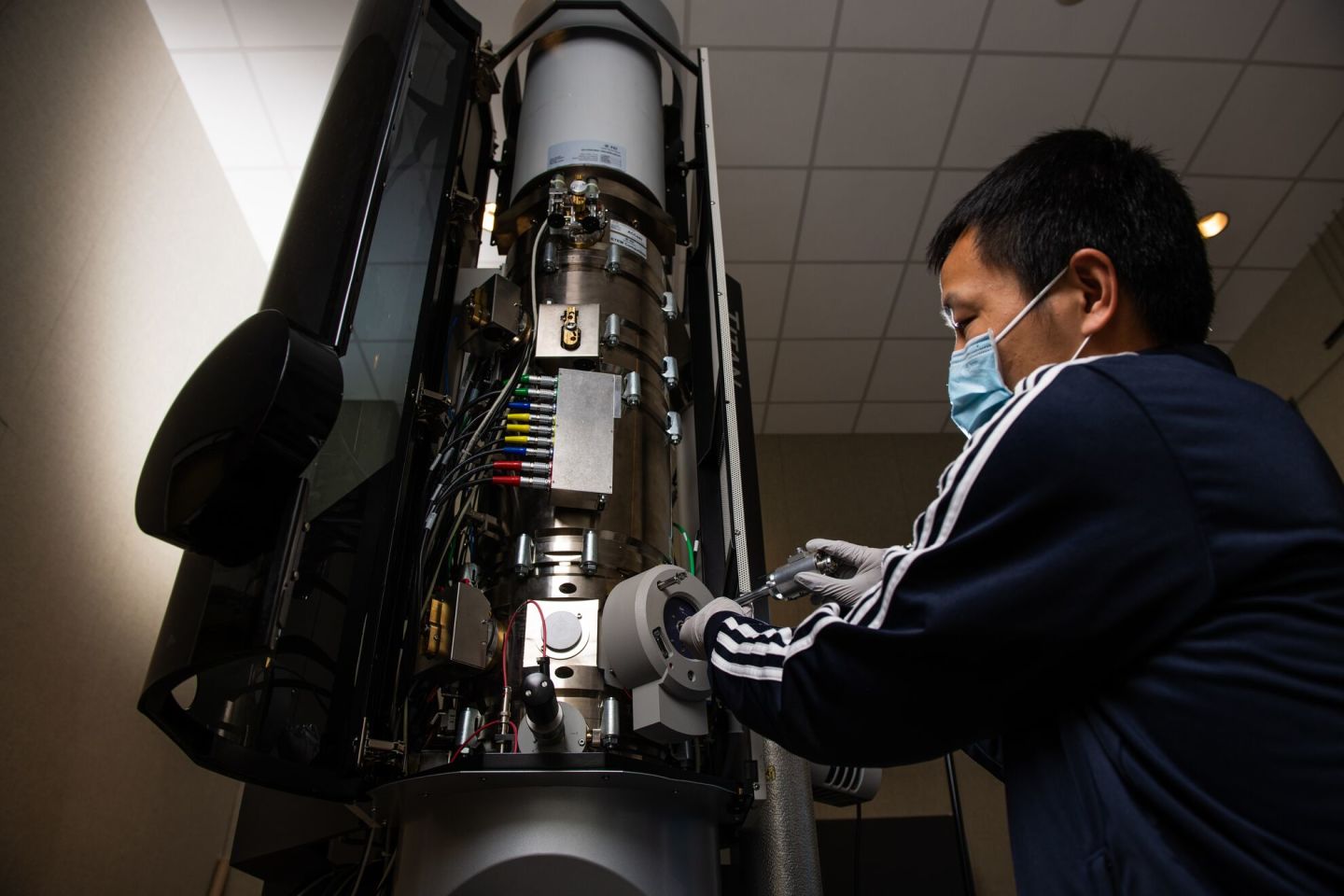With the potential to hold many times more energy than the graphite it would replace, silicon is an enticing proposition for scientists working on next-generation lithium batteries. The trouble is that the silicon doesn’t stand up so well to the stresses of battery cycling, but through first-of-a-kind observations researchers have gained new insights into the reasons why, and uncovered clues as to how this swift deterioration might be avoided.
Scientists working to integrate silicon into lithium-ion batteries hope to incorporate or entirely replace the graphite used as the anode component, where it has the potential to store as much as 10 times the energy. The trouble is, however, that as the battery is charged and discharged, the silicon swells and causes the anode to crack, ultimately ruining any chance the battery has of holding a charge.
We’ve seen some interesting approaches to solving this dilemma over the years, including using silicon with special nanostructures, combining it with solid state electrolytes, forming silicon sandwiches or caging the material in graphene. But a new understanding of the reasons why silicon anodes rapidly fail could greatly aid efforts to shore up their stability, with scientists at Pacific Northwest National Laboratory now witnessing the process in unprecedented detail.
As a battery is cycled, lithium ions move back and forth between the anode and the other electrode, the cathode, via a liquid electrolyte. As these ions enter a silicon anode, they push the silicon atoms aside, which is what causes the anode to swell to three or four times its size. Then when the lithium ions leave again, they create empty voids that cause the battery to quickly fail.

Chongmin Wang/Pacific Northwest National Laboratory
The researchers used a modified transmission electron microscope to record the molecular activity within a lithium battery featuring a silicon anode as it was charged and discharged. This showed that as the departing lithium ions created these vacancies, they evolved into larger and larger gaps that the liquid electrolyte would then wash into.
This had the effect of distorting a key structure on the edge of the anode called the solid-electrolyte interphase, seeing it infiltrate the anode and form in areas where it shouldn’t. The end result of this was the creation of “dead zones” that leave the anode unable to function. The scientists saw this process kick off after just one battery cycle, and by 36 cycles, the ability of the battery to hold a charge was significantly reduced. After 100 cycles, the anode was destroyed.
“With the present observation, it is clear that to solve the problem of silicon, it is essential to form a hard shell to isolate silicon from the liquid electrolyte,” co-author of the paper Chongmin Wang explains to New Atlas. “There are two ways to do that. One way is the “impromptu” formation of a hard shell on silicon upon initial functioning of the battery, which needs to adjust the liquid electrolyte composition to allow the formation of such a smart shell. Alternatively, one could apply a smart coating layer on silicon, leading to the isolation of silicon from contacting liquid electrolyte.”
With these promising new pathways opening up, the scientists are now carrying out “intensive” research and development into solving the silicon problem.
“It is hard to predict how long this will take, as we need to figure out a “coating” layer on silicon that meets both ionic and electronic conduction as well as mechanical resilient,” Wang says.
The research was published in the journal Nature Nanotechnology.
Source: Pacific Northwest National Laboratory
Source of Article